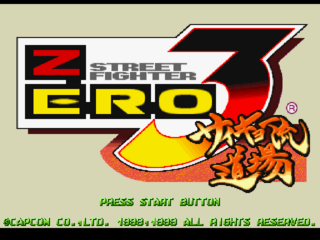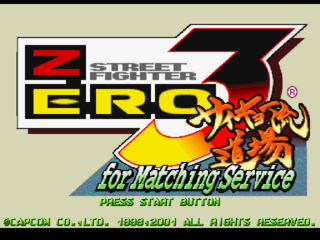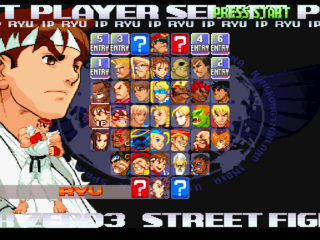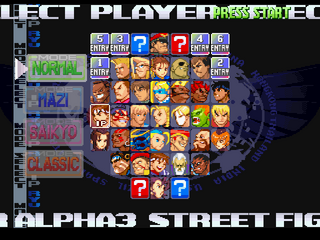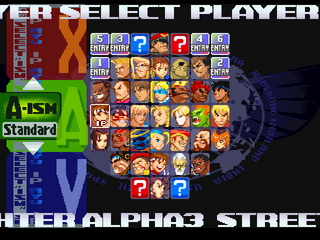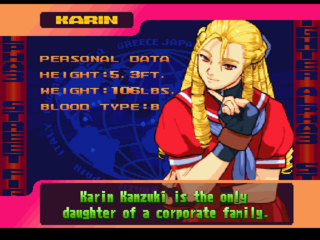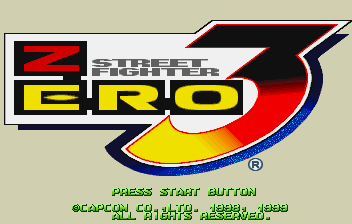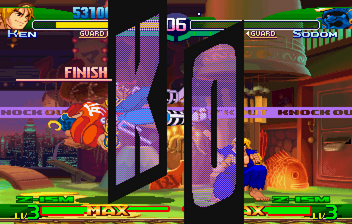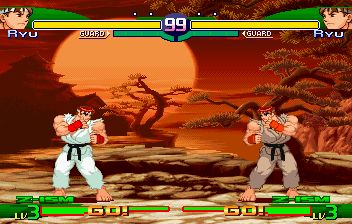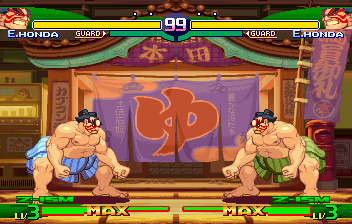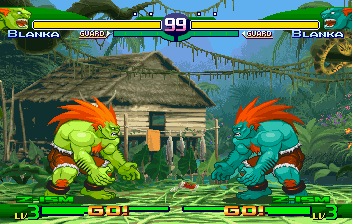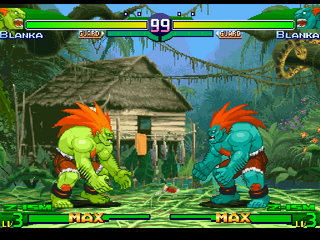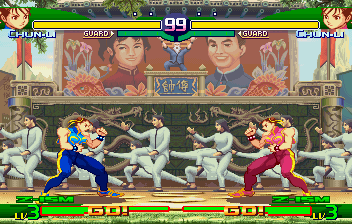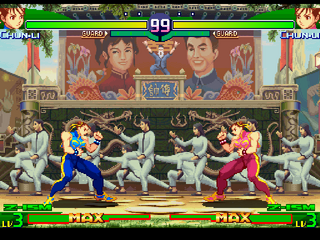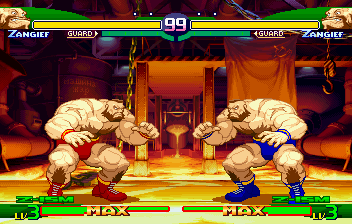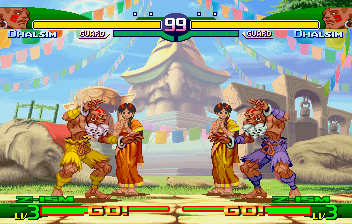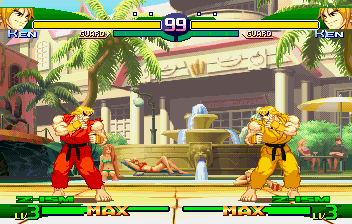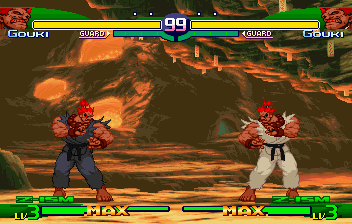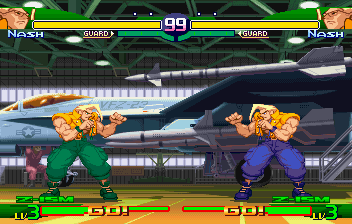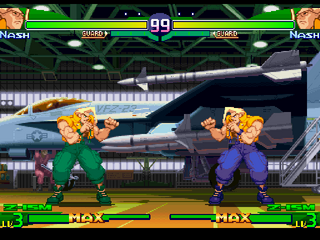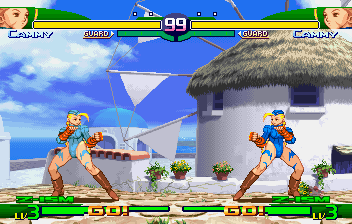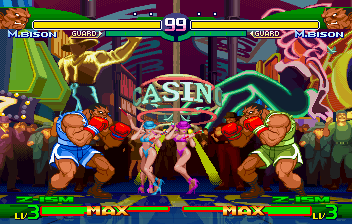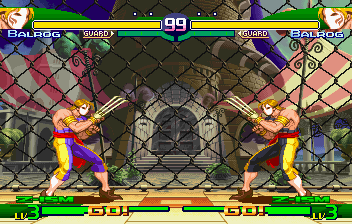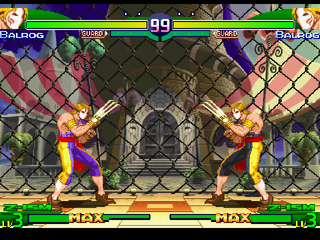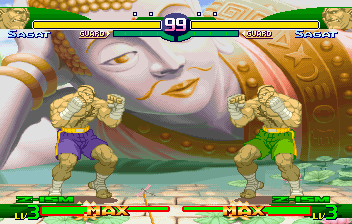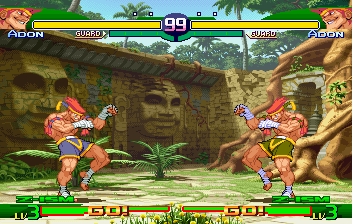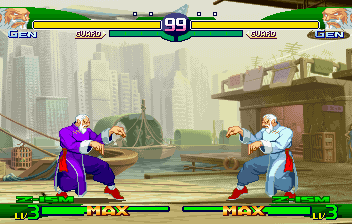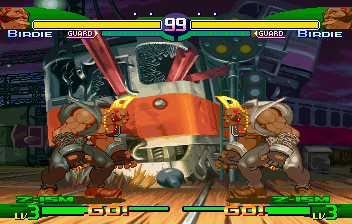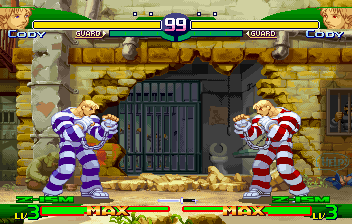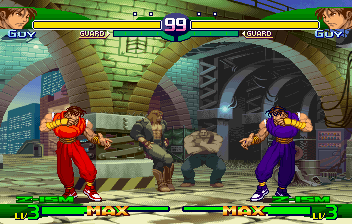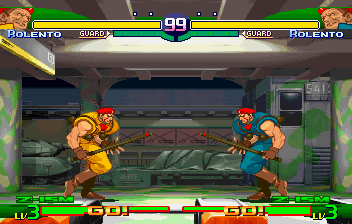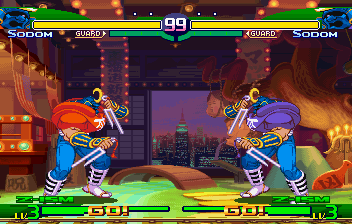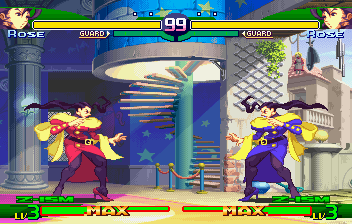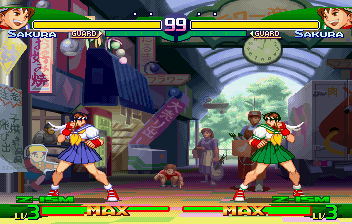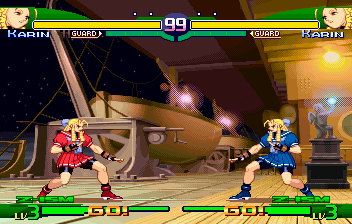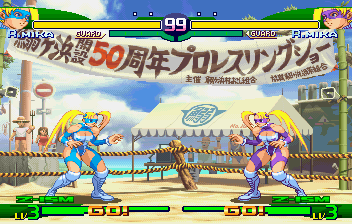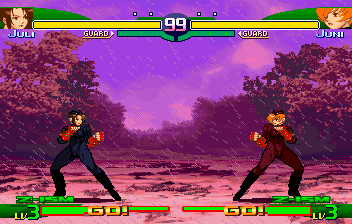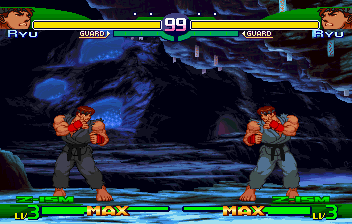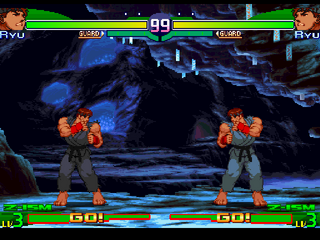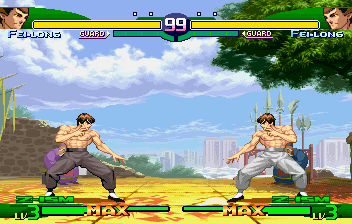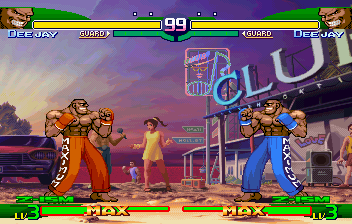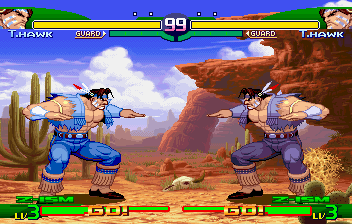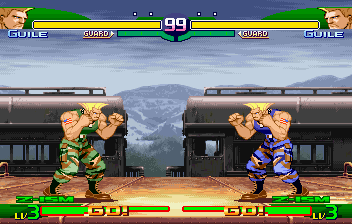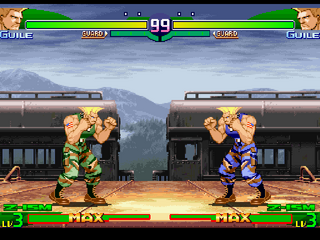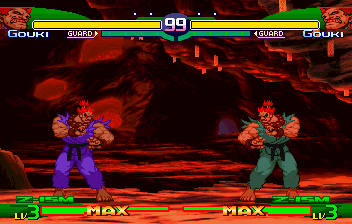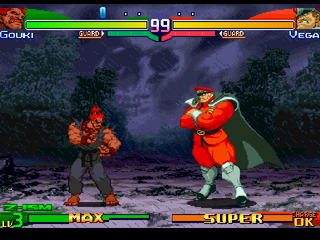- Back to: Street Fighter Alpha 3.
Localisation comparisons
Title screen
|
|
| NTSC-J (Matching Service)
|
The title logo is changed from Street Fighter Zero 3 in the Japanese release to Street Fighter Alpha 3 in the Western releases (along with the accompanying announcer line). "サイキョー流道場" is romanized as "Saikyo Dojo."
Main menu
|
|
| NTSC-J (Matching Service)
|
The descriptive text for each mode has been translated from Japanese to English.
|
|
| NTSC-J (Matching Service)
|
The Matching Service version has an additional item for "通信対戟" (online battle).
Character select
The scrolling title on the bottom has been changed from Street Fighter Zero 3 to Street Fighter Alpha 3.
The names of several characters are different between the Japanese and Western releases: Gouki was changed to Akuma, Nash was changed to Charlie, M. Bison was changed to Balrog, Balrog was changed to Vega, Vega was changed to M. Bison, and Shin Gouki was changed to Shin Akuma.
Mode select
The names of each fighting mode have been translated from Japanese to English.
Ism select
Z-ism has been changed to A-ism, corresponding to the title change, and the descriptive text has been translated.
X-ism, named after Super Street Fighter II X, was not changed to match the regional name of Super Street Fighter II Turbo.
The Western releases of the arcade game additionally change the vertical scrolling text from Select "Ism" to Select Fighting Style, but this change was not retained in the Dreamcast port.
Character bios
The text for the character bios, win quotes, pre-match dialogue, and endings have been translated from Japanese to English. The units in the bios have been changed from metric to imperial.
Stage transition
The title on the stage transition has been changed from Street Fighter Zero 3 to Street Fighter Alpha 3, and the large Z has been changed to a large A to match.
Version comparisons
Title screen
Main menu
Character select
The entry slots for World Tour characters are only shown in the Saturn version if at least one character has been saved, but they are always shown in the Dreamcast version. Some of the console-exclusive characters are in different positions: Guile, Balrog (M. Bison), T. Hawk, and Evil Ryu.
Mode select
Before choosing an Ism, the player is given a choice of modes in the Dreamcast version: Normal, Mazi, Saikyo, and Classic.
Speed select
The Ism selection uses mesh transparency in the Saturn port but true transparency in the Dreamcast version.
Speed select
The game speed selection uses mesh transparency in the Saturn port but true transparency in the Dreamcast version. The running man sprites face opposite directions.
T. Hawk retreating animation
The Saturn version includes animations that are missing from the PlayStation and Dreamcast ports of the game, such as a special animation for T. Hawk when he walks backwards. The Dreamcast version uses the same frames as when he walks forwards.
Next rival
Round 1
K.O.
Ryu stage
In all of the gameplay screenshots: the vitality bar has a gradient in the Dreamcast version (absent in both the Saturn port and the original arcade version), slightly more of the stage can be seen in the Dreamcast version, and the character sprites appear somewhat wider in the Saturn version.
E. Honda stage
Blanka stage
Chun-Li stage
Zangief stage
Dhalsim stage
Ken stage
Akuma (Gouki) stage
Charlie (Nash) stage
Cammy stage
Balrog (M. Bison) stage
Vega (Balrog) stage
Sagat stage
Adon stage
Gen stage
Birdie stage
Cody stage
Guy stage
Rolento stage
Sodom stage
Rose stage
Sakura stage
Karin stage
Karin stage (original)
In the original arcade version, Karin's stage is a nighttime recolor of Sakura's stage. In the home versions, she received a new stage set on her family yacht. The original stage is selectable in the Dreamcast version but not the Saturn version.
Dan stage
R. Mika stage
Juli & Juni stage
Evil Ryu stage
Fei Long stage
Dee Jay stage
T. Hawk stage
Guile stage
Shin Akuma (Shin Gouki) stage
Final Bison (Final Vega) stage
References
